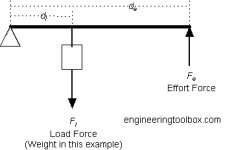It seems to me that a trailer can be generalized as a second-class lever...

...with the axle acting as the fulcrum, and the weight of the cargo lying, on average between the axle and the coupler. This generalization works even if there is cargo rear of the axle, because the trailer should always be tongue-heavy, therefore the center of mass of the cargo is always going to be ahead of the axle.
The relevant formula is Fe = W * d1 / d2, where Fe is what a scale would show at a given distance (d2) from the fulcrum / axle, and d1 is the distance from the fulcrum where the weight is placed on the lever. We can see that as d2 increases (you get further from the fulcrum / axle), the resulting Fe decreases, because d2 is in the denominator. Therefore, the further you are from the axle, the lighter a scale should read, all else being equal.
Hosspuller is right that having the trailer as level as possible is essential to getting a good measurement. If the trailer is on unlevel ground, place the scale under the coupler and then raise or lower it using blocks or a jack or whatever until the trailer is level. Use a torpedo level or something like that if necessary, as eyeballing level without a good reference can be tricky.
EDIT: This Sherline page seems to agree with me:
Trailer Loading and Towing Guide
For the ultimate in accuracy, note the actual difference in weights and calculate the ratio by dividing the full hitch weight by the weight at the tongue jack.
Example:
Weight at hitch = 950 lb.
Weight at jack = 1000 lb.
950 ÷ 1000 = .95
Future measurements at the jack multiplied by .95 will yield the exact weight at the hitch itself.


